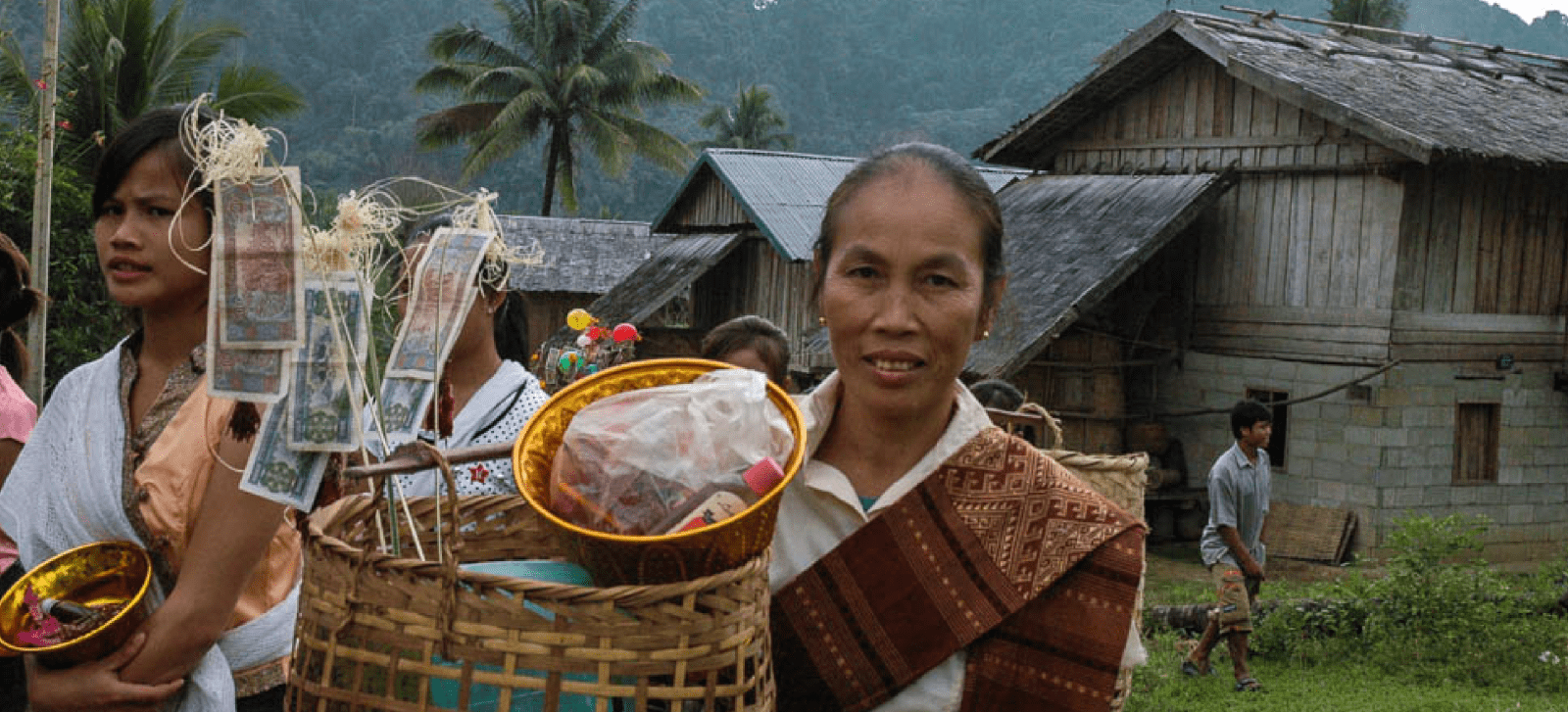The Tai Lue people belong to the Tai language family, which includes the Lao and Tai Dam peoples. The origin of the Tai Lue can be traced back to Sipsong Panna, which is now southern Yunnan Province in China. In Laos, they reside in the North, from Sayabouly and Luang Prabang provinces all the way to Phongsaly.
The Tai Lue adopted Theravada Buddhism in the 14th century. Their wooden temples are situated in a prominent location in the village, and are often decorated with mirrors and paintings. The majority of Tai Lue men become monks for a period of their life.
Tai Lue women are well known for producing beautiful cotton and silk textiles, and their skilled use of natural dyes. In particular, the Tai Lue employ the tapestry technique in their cotton weaving, where the weaver uses her fingers to interlace threads and create a pattern on a loom-woven textile. Tai Lue textiles feature motifs such as water chestnuts, nagas and birds.
The Tai Lue are also well known for their traditional architecture. In older Tai Lue communities, wooden houses feature carved decorations, windows with railings, and notched beams. Unfortunately, most of these houses are now being replaced with concrete structures.
Girls learn to spin cotton, reel silk and weave at a young age. A woman who is a skilled weaver is considered to make a good wife and mother, showing her diligence and patience. A Tai Lue woman will often weave prayer flags as offerings to temples, both earning merit for her family and advertising her weaving skills.


